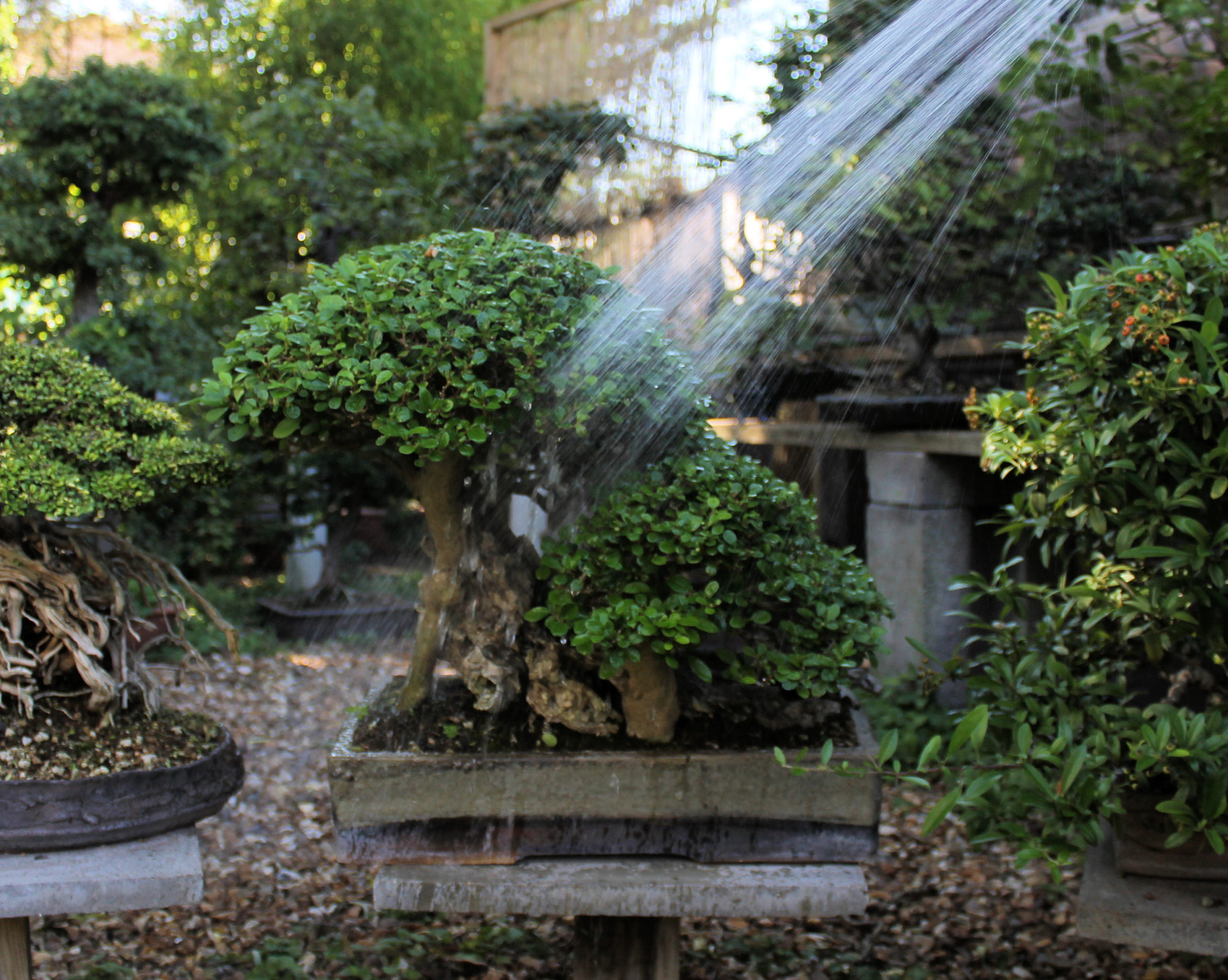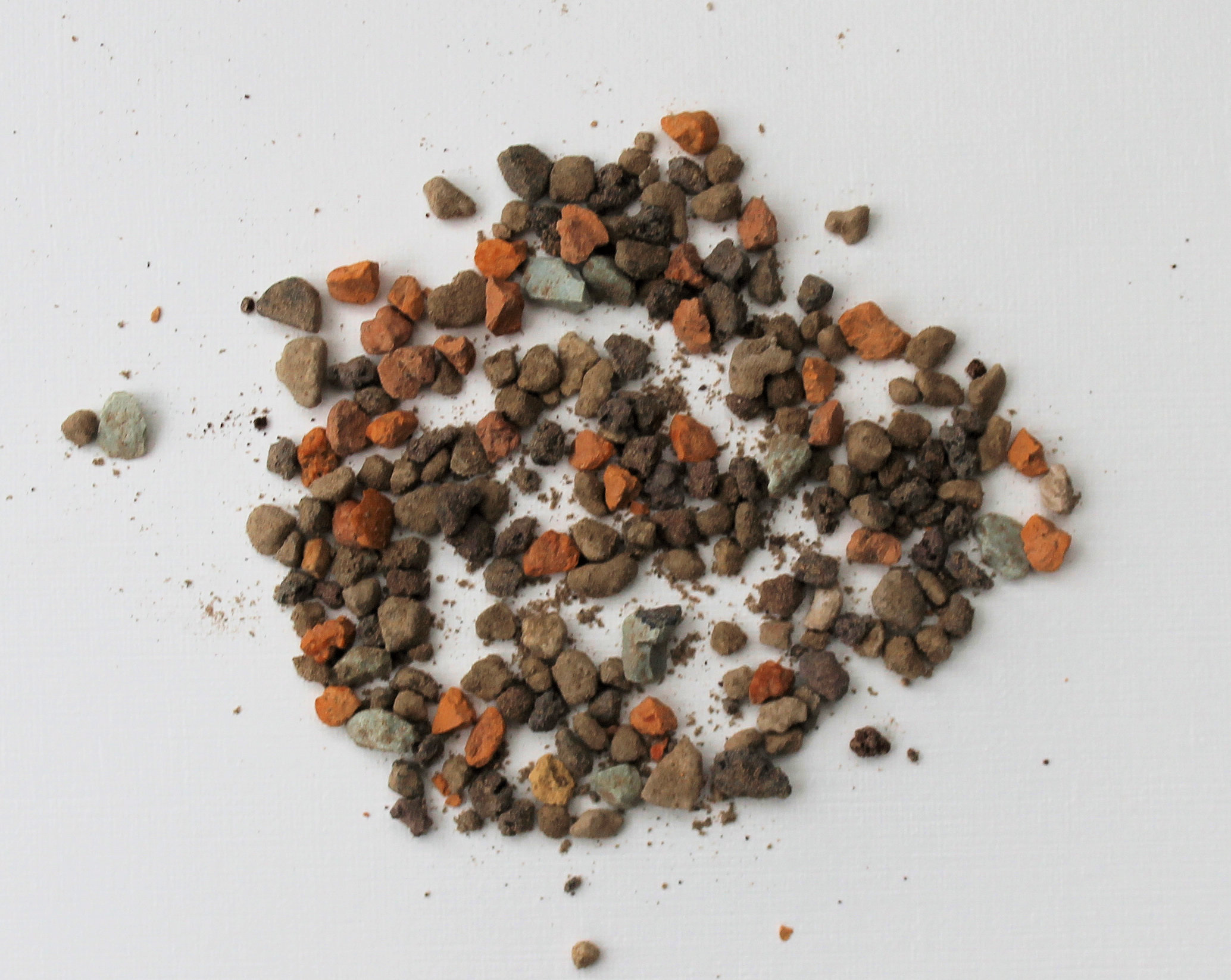The longer we practise bonsai, the more trees we seem to have hanging around our gardens. There are our bonsai, our trees in training (potentsai), trees for growing on in large pots or the ground, trees recovering from styling or collection, airlayers, cuttings and seedlings.
Our bonsai journey always reaches a point where we realise we have too many trees! At this time the questions arise; how many trees can I look after on a day-to-day basis? How many trees do I need to make a good bonsai collection in 5, 10, 20 years? How many of these trees will actually make good bonsai…..ever?
The answers can ultimately depend on the individual enthusiast and their own time limitations, space restrictions, patience and motivation.
This article is based on the thoughts of Brent Walston, renowned bonsai nurseryman and owner of EvergreenGardenworks.
Brent W: I have somewhere in excess of five thousand plants in various stages (not counting liners and cuttings), so my perspective my be a bit different to many bonsai enthusiasts. But then, I am blessed and cursed with having nothing else to do. You should have as many plants as you can care for, with some provisos, of course.
Know what you are buying. If you are just buying plants hoping they will become bonsai, stop, think, and learn some more first. Buy (or obtain) only species that have potential, and within those few species, buy only those that have at least some potential. If you can’t recognize potential yet, stop, think, read, and learn what it is.
The flip side of acquiring plants is discarding those that prove not to have potential. You must be willing to do this, and it is hard to give your children a boot out the door. Clubs are great for this, you can donate them to the club sales. I have known many people who could just not give up their plants and simply could not pass up orphan plants. It is a disease, and it will wreck your ability to create good believable bonsai.
The percentage of all attempts that will become believable bonsai is exceedingly small. Less than one percent. So, if you have fewer than 100 plants, the odds are that you will never have one, unless you are adept enough to recognize good potential, and smart enough and wealthy enough to buy it.
It may sound cruel, but these numbers are not pulled out of thin air. This what I see from my collection and the collections of others based on twenty years of experience. At the end of this twenty years, I am just now starting to have some decent plants worthy of showing. If I had concentrated on shohin, I probably could have cut this in half, but I am just a sucker for the big stuff, even though I appreciate and admire the smaller.
Keeping plants alive is good, and is probably the best place to start. If you can’t keep them alive, then you already have enough plants. Don’t buy more until you are confident you can keep them alive AND trained. Next, is to learn what species will really make good bonsai, and shy away from the others, except for purely experimental purposes. After you know what species to look for, you have to learn how long it will take to do what you want to do in terms of style and size. Once you have learned that lesson, you will probably have a beginning feel for potential and some ability to see it in untrained stock. After these lessons, which may take a few years, it will be time to collect with abandon, to satisfy your thirst for material, but always remembering that you have to let go of the dogs and dregs if you are ever to truly develop that material.
Harry H: Though I agree with your thoughts, how beneficial is our attitude to a beginner?
Brent W: I think it’s never too early to give beginner’s a sense of what bonsai is about, even if they can’t really make use of the information immediately. I know that I have been influenced in many ways by simple off hand comments (sometimes years before) when the time was right for the lesson to sink in.
Harry H: While it is undeniably important to be able to discard trees, IMO it should be those trees that have little or no potential in comparison to the rest of an enthusiasts stock so one is not bogged down with comparatively poor trees at the expense of those that will make better bonsai. Otherwise we swing to the opposite direction and have a scene that discards all trees that are not high quality (for instance in your 1%).
Brent W:I agree, and I try to avoid absolutes. I take everything with a grain a salt, including my own beliefs. I have often said that the difference between good potential (bonsai) and bad potential is simply time. You can convert ANY material suitable species into good potential material if you are willing to start completely over. But at some point you have to ask yourself if you are willing to invest that kind of time and effort, and what your time and effort are really worth. This is of course relative as well, the older we get, we more aware we are that there isn’t an open ended period to develop stock. I am becoming painfully aware of that these days.
Harry H: Surely the ability to make something out of poor quality material hones bonsai technique and artistry?
Brent W: I used to think that, and it isn’t completely untrue. But again, will you learn MORE by making really horrendously bad material into mediocre bonsai, or by turning good potential material into quality (believable) bonsai? The ability to turn bad material into decent material isn’t so much a LEARNING experience as it is a demonstration of skills already acquired.
Harry H: Would you or I or many other people still be practising bonsai if we had discarded our poor quality trees that were not in that 1% and had ‘waited’ for a 1% tree to come along?
Brent W: That’s not really the question. Knowing that only 1% of material is going to make good bonsai doesn’t translate into discarding everything but the 1%. But it does put things into proper perspective. I don’t know of a single bonsai enthusiasts that ONLY has top quality material. We all make compromises with our trees, otherwise none of us would ever have more than one or two trees. I am simply making the argument against saving EVERYTHING. That is where the danger truly lies. This is an ‘absolute’ that literally wrecks some folks’ bonsai path. I seen it happen time and again, even to some of my friends. They cannot bring themselves to get rid of the junk and spend more time and energy on better material. As I said before, it’s a ‘disease’ and if you know about it, you may be able to avoid it.
Harry H: Don’t we learn what makes good material by our own realisation that using poor material is a waste of time if we want high quality trees?
Brent W: That is ONE way that SOME people learn it. Some people never learn it though, and have to be led by the hand or have a severe talking to, and even then some people won’t give up the junk habit of rescuing plants. It’s an addiction. Learning that lesson through ‘experience’ can mean years of frustration and wasted effort, whereas if they just (ahem) listened to me…… Of course we all know that we learn things when we are ready to learn them. I just like to play Jonny Appleseed with ideas, drop a few here, drop a few there. You never know what will sprout and blossom.
Harry H: I suspect that with 5,000 trees and 20 years work growing on trees for bonsai behind you, you are able to be more selective about the quality of your material than the majority of us!”
Brent W: Well…sure! But what I hope people are taking from this is that there are lessons you just can’t learn by experience unless you are going to do what I did. But that doesn’t mean that you can’t learn from MY experience, if you are willing to listen.
Harry H: That is not reason for anyone not to work towards certain standards and personal improvement, but as you know, these things take time
Brent W: Exactly, but I hate to see people constantly reinventing the wheel.
Harry H: I am reminded of some recent comments by a bonsai collector could only sell some of his years-old-fat-trunked collected material for $200 because there wasn’t the demand for it yet there are hundreds and thousands of enthusiasts willing to spend 5,10,15 years willing to look after and trying to develop material, that would never be of as good quality.
$200 is a lot of money for a tree though it could be argued that (on a purely monetary basis) once styled and refined that tree would be worth $$’s more. If you were to forsake $5 for every hour you spent on a tree over 10 years of development, the $200 material is very cheap in comparison.
Personally, with hindsight, I’d buy some good material from the start and save myself 5-10 years!
So what are the practicalities of looking after 5,000 trees Brent?
Brent W: It’s hard to know at this point if the nursery is going to be sustainable as a one person enterprise. It is complicated by the fact that I just had to MOVE all those trees and more from one location to another, a project that took almost six years. Now that they are all here, I have to begin the arduous task of getting them into a sensible plan of regular maintenance. There are still about two thousand trees that are in a temporary staging area that I hope to deal with this winter.
Aside from that, the plain fact is that some trees don’t need any attention at all, other than fertilizer and water, for many years, while others need once or twice yearly attention. This varies by species but mostly by stage of development. One of the things that I have learned over the years, is how to recognize when a tree needs attention to move to the next step of development. I have also become adept at seeing exactly what needs to be done and executing it in minutes or less, you have to in a business setting or you go bankrupt in short order. It actually takes me MUCH longer to describe what a tree needs than to execute it. That’s why demonstrating the techniques seems painfully slow to me. Most people agonize over what to do, I don’t have that luxury. If I can’t instantly see what to do, I just move on the next tree.
To put this in context for folks here, I am going to make a sweeping generalization: Most people play with their trees WAY too much. And in most cases that I see, this is counterproductive behavior. That is why I recommend that practitioners have lots of trees, otherwise they twiddle them to death. If you just HAVE to have something to work with, your best bet is to buy a piece of advanced material as soon as you have the skills to keep it alive and maintained as believable bonsai. It is difficult to just let a tree grow to develop the trunk when you only have a handful of trees; the itch to prune is just irresistible. After all, what is the point of having a hobby if it doesn’t give you something to do? Most people would be better off just putting their trees in the ground and not touching them for three to five years. The difficulty is knowing when to go to the next step (hopefully knowing what the next step is!), and it isn’t obvious. That is why I spend so much time hammering this in the forums and writing articles like Trunk Development. The actual hands on development time for trunk formation for a typical tree in my nursery is less than an hour. This doesn’t include all the things that are necessary to provide an environment that will actually keep the tree alive, but rather just those procedures directed specifically at one individual tree.
When you look at it like that, my prices may seem very expensive, but it took me twenty years to learn how to do it, and probably a quarter million $US to get here (God, I think is more than that). It is doubtful that I will ever recover my total investment given I probably only have twenty years of productive life left. But back to the subject. As the trees develop, they begin demanding more and more attention, especially conifers. I am often happy to leave many deciduous plants alone for five years or more before executing a chop or taking some other action. But once the trunk is finished, the vacation is over. Final branch formation is not a process that can be ignored, because branch structure can be ‘lost’ in a year or two of unrestrained growth. The only solution for most deciduous trees is to remove all the branches and start over. With pines, it is even more complicated than that because you can’t remove the branches and start over. Rather, you must completely redesign the tree.
Fortunately, it takes a long time to form a trunk, so I have been coasting through this transition period of moving to the new nursery. But the party is over. I now have a lot of trees with finished trunks and they are screaming for final design and branching development. That is the next phase of the nursery operation. Bob, my new apprentice, hopefully will be able to help with this. With the additional help of a part time drudge worker, I think I can pull it off. I don’t intend to have a large collection of finished bonsai, either for sale, or for my personal collection. That would be VERY time consuming, and probably a financial lost cause, at least at this stage of bonsai in the US. I have also stopped expanding the nursery. It isn’t going to get any bigger, and in fact, it will shrink as I sell off the developed inventory.
I don’t expect people to do what I do; there aren’t more than a dozen growers like myself in the US. However, people can learn a lot from taking note of what I do, and applying those principles to their own growing projects. After all, growing the plants is more than half the fun. Hopefully, they will also be able to save themselves years of experimentation and twiddling their thumbs by buying an occasional plant from me (when they are for sale- not yet). This is how many people are going to get that 1%, and believe me, they are going to get it cheap.
By the author of Bonsai4me.com, Harry Harrington.
The widely acclaimed beginners bonsai book and your introduction to the Art of Bonsai!





